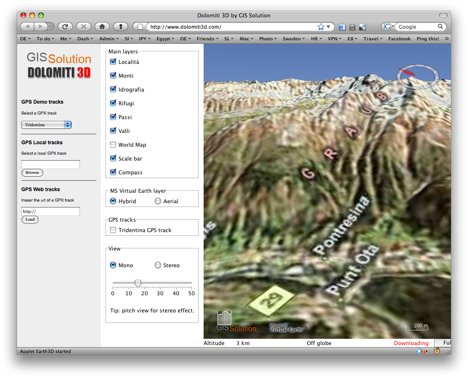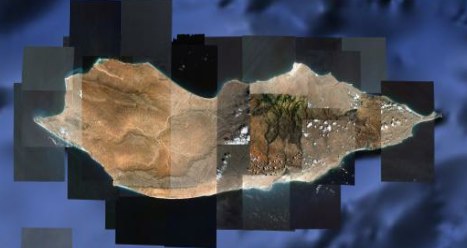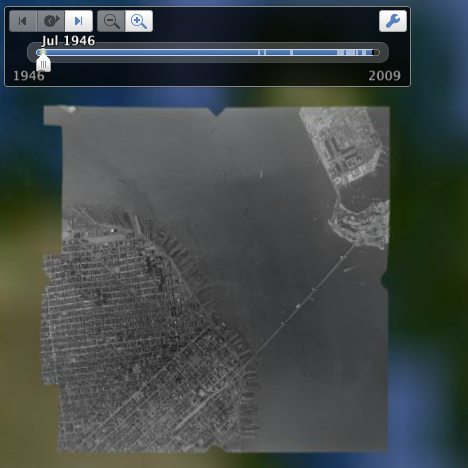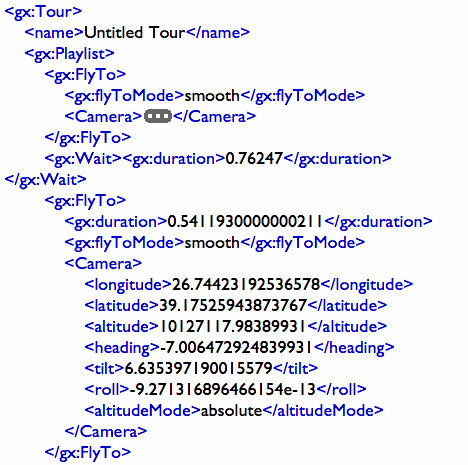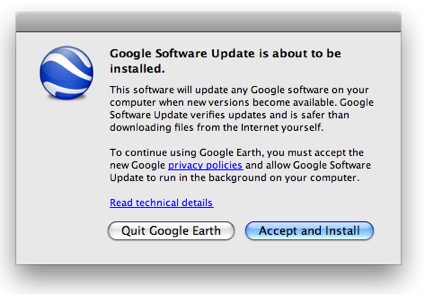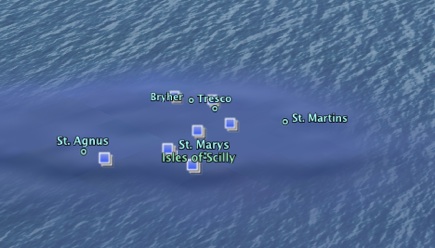Here are two very interesting datapoints that show beyond any doubt that the battle against censorship is going our way:
1. Hearts and minds dept:
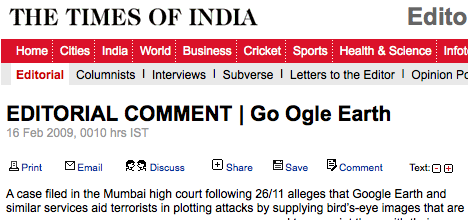
In a most impressive turnaround, the once aggressively pro-censorship Times of India now argues that technologies like Google Earth and the good they do should not be banned because a minority uses them to evil ends. Never mind that the title and the argument appear cribbed from this blog, where I’ve made the argument ad nauseam these past few years, often at the expense of the very same Times of India — I’ll be gracious in my vindication:-). I’m just glad the reductio ad absurdum argument is now firmly ensconced in the minds of the Times of India editors, where I hope it has staying power:
If we hope to deprive future fundamentalists of crucial technologies we should keep in mind that they also use satellite telephones, mobiles and walkie-talkies – along with radios, GPS navigation devices, wi-fi laptops, Blackberrys and carrier vehicles such as cars and light aircraft or, as in the Mumbai attack, boats. So do we prohibit these too?
It’s possible that a recent interview with Google’s John Hanke in the Sydney Morning Herald — in which he voiced the very same argument — was the immediate catalyst for the editors’ change of heart, as the item was picked up by quite a lot of techy blogs and news services:
While this debate had “mostly died off” in the West, it was still a live issue in countries where the “government is used to controlling everything”, Hanke said. Often this concern was a pretext for a government trying to reassert control over its “closed information societies”, he said.
Good to see that the media is switching sides in this debate in India.
2. Pragmatic dept:
As long-time readers of this blog know, Google Earth imagery is either satellite imagery or aerial imagery. Country sovereignty does not extend into space, so satellite imagery is not censored before being released to the public (and Google Earth) (with some notable exceptions). Country sovereignty does extend into airspace, so state agencies do get to censor aerial imagery before we the public get to see it. Aerial imagery is more detailed, however, which has made for a nice conundrum for Google as it decides which imagery to use for its virtual globe.
That conundrum has now in many cases been made moot, purely from a pragmatic perspective. This is because Google Earth 5 comes with the incredibly nifty new historical imagery timeslider, which lets switch between image datasets taken at specific dates. For some locations there are multiple images available taken over the past few years alone, from different sources, and often these will include both aerial and satellite imagery, interspersed in time.
The upshot is that with Google Earth 5, neither you nor Google have to choose between higher-resolution censored imagery or slightly lower-resolution satellite imagery, if both is available. Just slide the timeslider to find the image that suits you best.
A spot in southern Spain perfectly illustrates this. Maarten Lambrechts found a censored spot in aerial imagery but then was able to circumvent the navigation by playing with the slider. He’s made a tour for Google Earth 5 that zooms in on the spot and then moves the slider for you.
Another power user who’s made deft use of this massive increase in available imagery is IMINT & Analysis’s Sean O’Connor. His own example of how it allows the circumventing of censorship is a post about a French military installation near Dijon. But Sean also manages to use the historical imagery datasets to point out specific events.
And historical imagery is also a great boon in other ways. For example, check out construction progress at the nuclear enrichment facility at Natanz, Iran. There’s imagery from February and October 2003, and then from 2007, with progress clearly noted. Before, comparing imagery required overlays of the kind in this post. No more.
